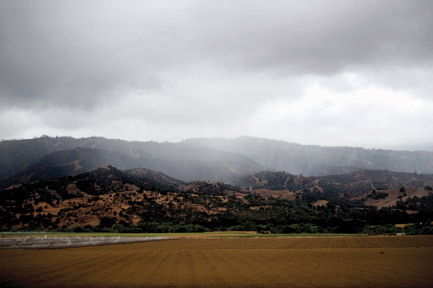The brown hills of San Benito County and the rest of the sunny state might finally get rain this winter.
County officials are cautiously optimistic that strong El Niño conditions will persist through the state’s coming rainy season, replenishing groundwater, adding to reservoirs and nurturing rain-dependent crops and rangeland.
“It’s all speculation. They said the same thing last year,” said Shawn Novack, the program manager for the Water Resources Association of San Benito County. “This year, it seems to be bigger and more definitive but last year they said there was an El Niño forming and it never materialized.”
There is a greater than 90 percent chance that El Niño will continue through the winter, said Warren Blier, a science officer with the National Weather Service Forecast Office for the Monterey and San Francisco Bay Area. That percentage came from the official forecast made by the NWS Climate Prediction Center, he said. There is an 80 percent chance El Niño will last through spring, according to the same forecast, he said.
But even if rains come as part of a strong El Niño, officials such as Blier and Novack say it is unlikely to pull the state out of all the consequences of a four-year drought.
“From a water standpoint, we welcome the rain, but our whole water delivery system in California is based off snowpack,” Novack said. “El Niño storms are normally warmer storms and they don’t normally generate a lot of snowpack.”
Warm rains would be great for cattlemen depending on the rangeland and those growing certain grain and hay crops dependent on the rain, said Karen Overstreet, the agricultural commissioner for San Benito County.
The crop report for 2014—released this week—showed a total value of $285,000 for hay and grain, which was down by about $2.5 million from the prior year.
“You can definitely see the effect,” Overstreet told the Free Lance. “Because of the drought, those corps did not produce.”
But the warm showers might not be so good for those raising orchard crops dependent on chilling hours, the agricultural commissioner said.
Kent Rounds, the plant manager of the San Benito Foods tomato cannery, said growers and the entire industry are concerned about the water supply, but this year might be better than others.
“The El Niño is here. We might have a wet winter,” he said. “The entire state would breathe a sigh of relief.”
In April, Gov. Jerry Brown issued an executive order calling urban water users throughout the state to cut consumption by 25 percent from 2013 levels.
Increasing water restrictions have led many state residents to rethink landscaping choices. Hollister residents Kathy and Noel Provost, for example, replaced about 3,000 square feet of grass in May with synthetic turf, decomposed granite and pavers in an effort to curb water use and secure a truly green lawn. The City of Hollister also let the grass expanse in front of the Briggs Building turn brown after previously watering it in the midst of the new restrictions.
Officials hope an El Nino can help temper such actions. The word “El Niño” is Spanish for “little boy” and refers to the Christ Child, explained Warren Blier, the NWS science officer. Years ago, Peruvian fishermen noticed that every few years the cold upwellings of water best for fishermen did not appear, he said. The change often took place around Christmas, leading the fisherman to name the phenomenon after the Christ Child, he explained. Today, scientists use “la niña”—Spanish for “little girl”—to refer to opposite conditions. Some people half jokingly refer to the rest of the years as “la nada”—Spanish for “nothing”—“but that’s not a scientific term,” Blier said.
Simply being an El Niño during our winter doesn’t really mean anything in terms of how the weather will turn out, Blier said. But years with a strong El Niño have a greater chance of being wetter, he said.
“The odds are looking reasonably good that it would turn out to be a strong El Niño,” Blier said. “But it’s not a certainty by any means.”










